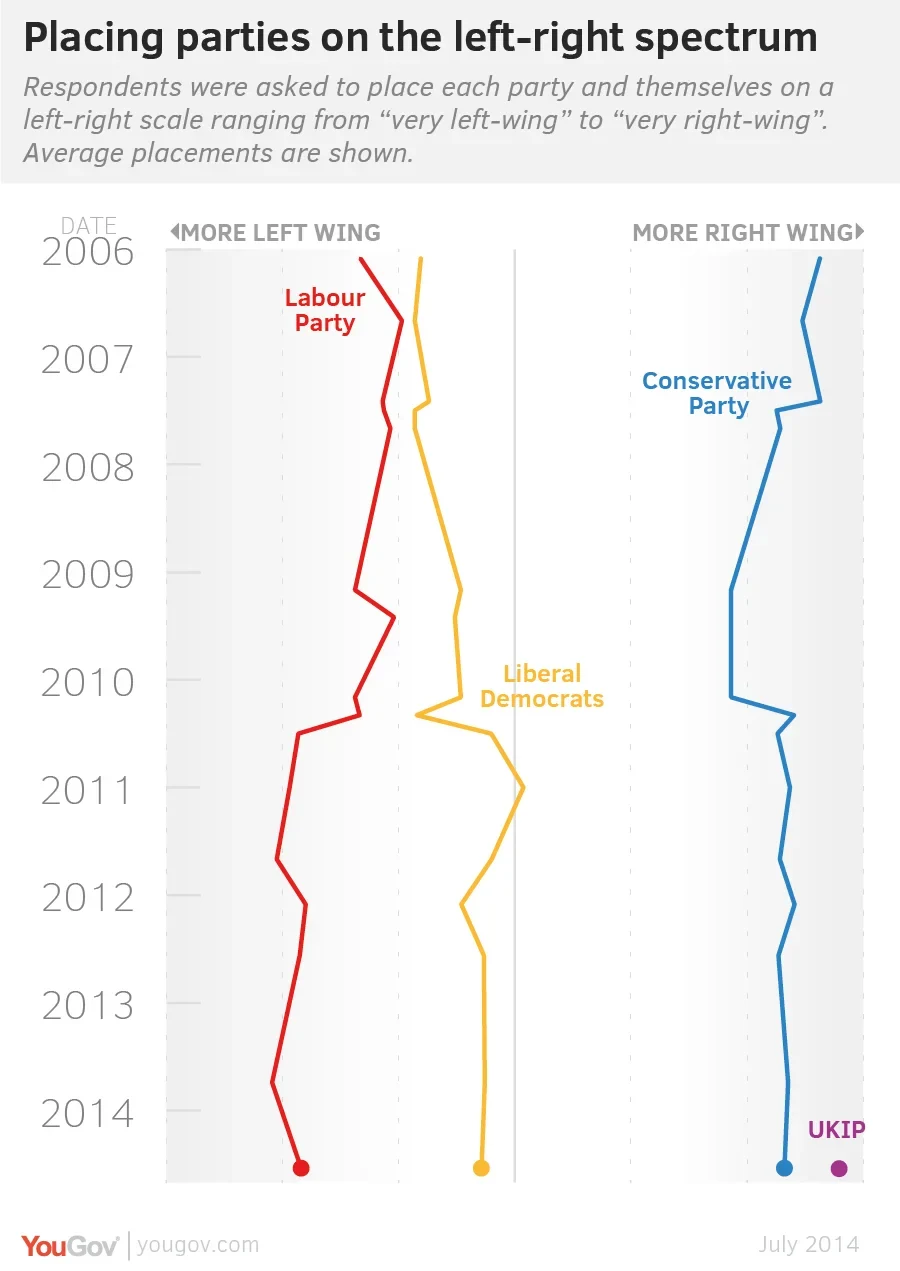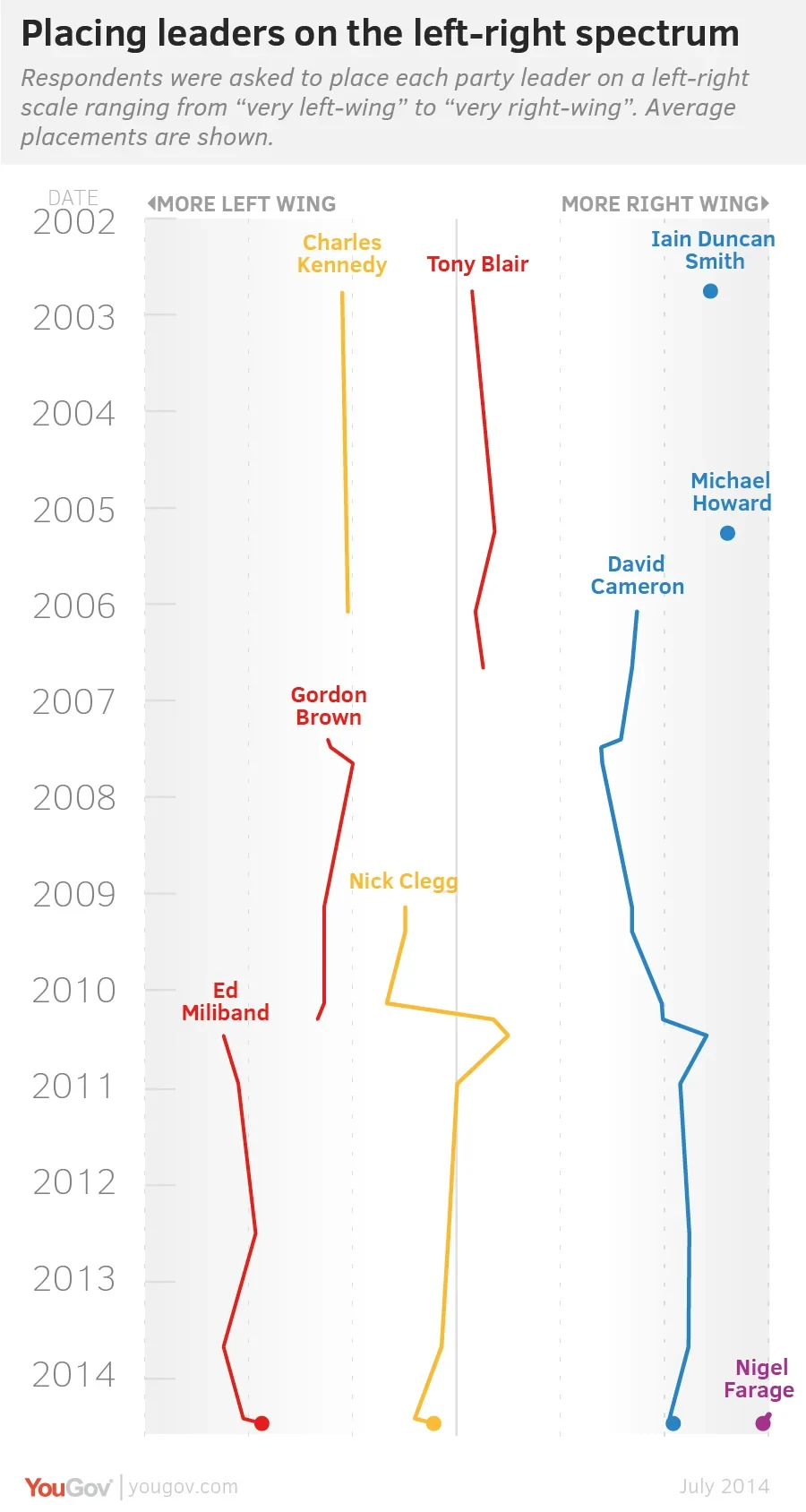YouGov tracking data since 2006 shows the changing reputations of the political parties: Labour’s leftward shift under Ed Miliband, the Conservatives' rightward swing since 2010
David Cameron has just installed a new ‘Eurosceptic’ cabinet, and Labour is focusing on boosting its business credentials and standing on the world stage - telltale indications of how the political parties would like to be perceived as we go into election year.
It is too soon to say if the moves will be successful, and YouGov's latest research was conducted prior to the Conservatives' reshuffle, but tracking data compiled over as many as 12 years gives a clear sense of how the main parties and their leaders have been perceived as shifting on a left-right scale. The two charts below shows mean scores based on 100 being "very right-wing" and -100 being "very left-wing".
It took David Cameron four years after becoming leader to bring perceptions of the Conservative party anywhere near to the centre ground. Not until 2009 were the Conservatives given a score of 37, down from a high of 53 in 2006.
But the realignment only lasted until the 2010 election, after which David Cameron’s focus on the environment and communities gave way to the sharp realities of austerity. Since coming to power perceptions of the party have varied little from their average of 46.

Noticeably, Mr Cameron's Conservatives are not seen to have moved further to the right since 2010, even after their defeat in the European elections. UKIP, which has only recently begun to be tracked, is only seen as slightly more right wing than the Conservatives, at 56.
When asked to report their own political leanings, on average Conservative voters currently score at 30, Labour voters at -40, Liberal Democrat voters at -16 and UKIP supporters at 32. The population as a whole currently average at -4. This figure has not strayed further to the left, and has generally sat at around -2 (except between 2006 and 2007, when it averaged 1).
The Party Leaders
While opposition brought the Conservatives closer to the centre, it has moved Labour further to the left. But what both David Cameron and Ed Miliband seem to have in common is a perceived break with the past: just as David Cameron succeeded in appearing more centrist than his predecessors, Ed Miliband in 2011 was seen as more left-wing (-45) than Gordon Brown in 2010 (-27) and Tony Blair in 2006, who was actually seen as slightly right-wing (5).
Mr Miliband has since reached his 2011 left-wing high once, after his 2013 party conference speech in which he announced a freeze on energy prices, but in the latest research has reached a low of -37. The party itself has strayed little from its post-2011 average of -39.

The Liberal Democrats, therefore, are the only party to have moved closer to the centre since 2010, from -17 in May of that year, when Nick Clegg entered government on a left-wing platform, to -6 now. Nigel Farage scores 59, seven points to the right of Michael Howard in 2005.









